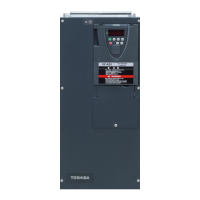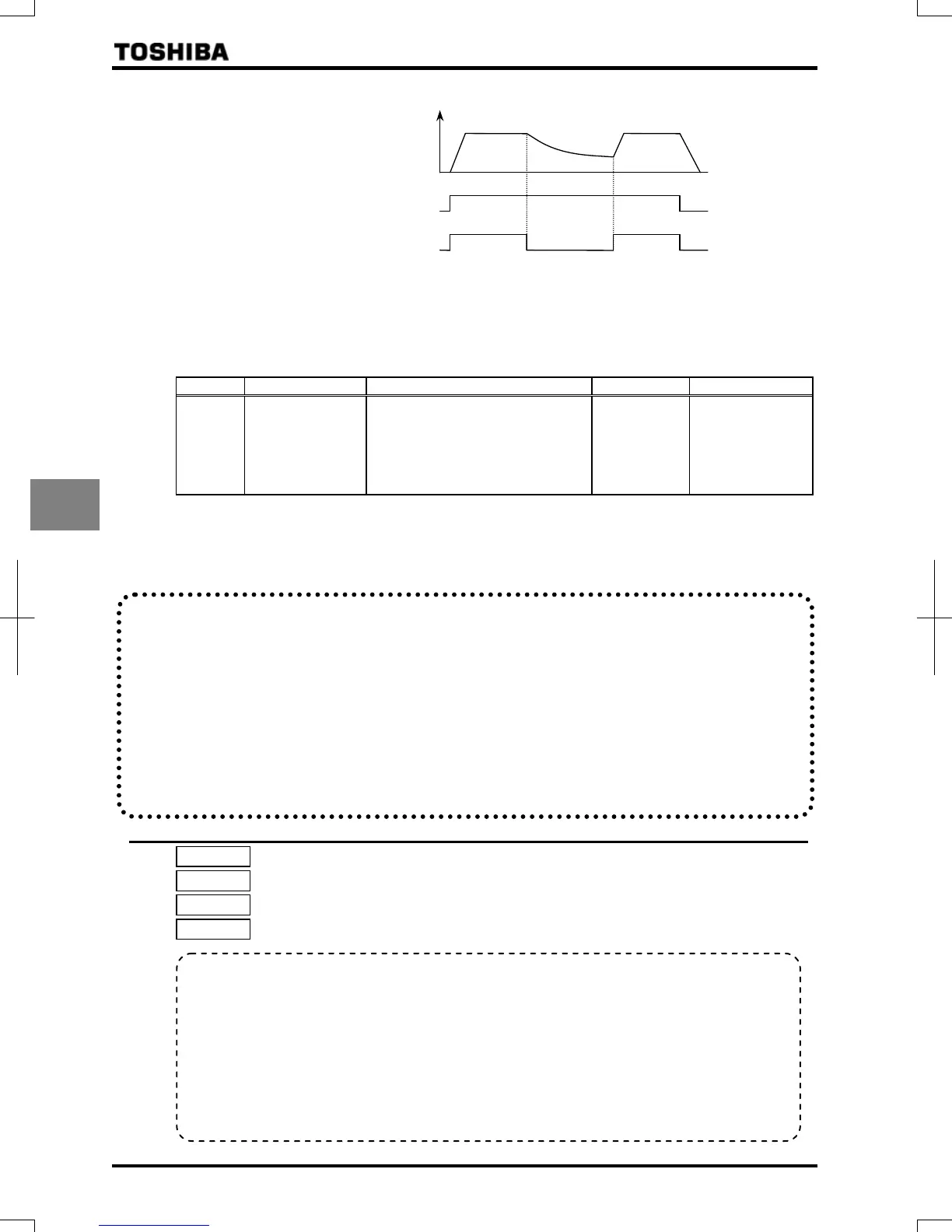E6581386
E-32
5
2) Restarting motor during coasting (Motor speed search function)
Motor speed
F-CC
S3 (ST operation standby
signal) -CC
=: This function operates after the S3-CC terminal connection has been opened first and then connected again.
Example: When ST standby signal is assigned to the S3 terminal, setting to 2, to (cancels the “ST
standby signal always ON” setting. By default, this parameter is set to : always ON.) and to
(assigns ST standby signal to the S3 terminal) makes it possible to momentarily stop and restart the motor
by just turning the S3 terminal off and then back on.
Title Function Adjustment range Default setting
Setting value
Auto-restart control
selection
:Disabled
:At auto-restart after momentary stop
:When turning ST operation standby
signal on or off
: +
:At start-up
or
* To restart the inverter in operation panel operation mode, press RUN key after a power failure.
* When (Number of PG input phases) = (single phase) in PG feedback control mode (=), the inverter
may trip (: speed error) if the direction of rotation of the motor does not agree with.
*The function (=) is activated when ST signal turning on or restart after a momentary power failure.
*The function (=) is activated when starting each time.
Operation and application of the auto-restart function
• By using retry function together, auto restart function can be actuated at the time of tripping.
The motor coasts during the waiting period between the entry of a start command and the start of operation. If the coasting
of the motor during this period does harm to the machine, do not use the retry function.
• At restart, it takes several seconds. for the inverter to check to see the number of revolutions of the motor. For this reason,
the start-up takes more time than usual.
• When the auto restart function is selected, this function is actuated also at time of activation of motor and at the first
operation after the reset of tripping. The operation will restart after the waiting time passes.
• Use this function when operating a system with one motor connected to one inverter. This function may not operate
properly in a system configuration with multiple motors connected to one inverter.
5.18.2 Regenerative power ride-through control/Deceleration stop during power failure
: Regenerative power ride-through control
: Non-stop control time/Deceleration time during power failure
: Under voltage detection level
: Regenerative power ride-through control level
• Function
1) Regenerative power ride-through control: When momentary power failure occurs during operation, this
function makes operation continue using the regeneration
energy from a motor.
2) Deceleration stop during power failure: When momentary power failure occurs during operation, this
function stops the motor quickly compulsorily. A forcible stop is
carried out in (Deceleration time) using the
regeneration energy from the motor.
(Deceleration time varies with control.)
After the forced stop, the inverter remains static until you put off
the operation command momentarily.

